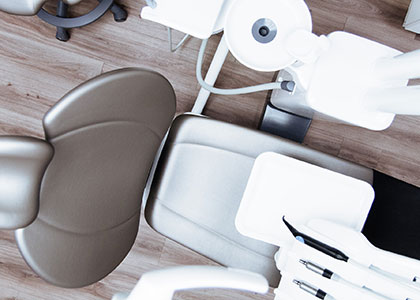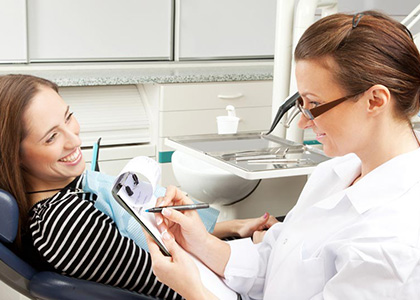Panoramic X-Ray Guide
Welcome to our panoramic X-ray guide, where we introduce one of the most widely used medical imaging techniques. This article briefly explains the principles of operation, benefits, and potential drawbacks of this technology. Learn everything you need to know about X-ray procedures before your treatment!
How Does X-Ray Work?
Medical imaging is a crucial part of modern medicine, involving technologies and procedures that allow for the creation of special images of the body for diagnostic purposes. This scientific field encompasses:
Endoscopy
Clinical photography
Microscopy
Radiology
Thermography
One of the most commonly used medical imaging technologies is the X-ray (short for RTG, from the English "X-ray"). It is used in mammography, angiography, lung screening, suspected bone fractures, dental examinations, and even in treating cancerous diseases with higher energy rays. Diagnostic use involves mild radiation exposure, is cost-effective, and can provide crucial information for the treating physician. But how does this technology work? Let's take a look!
The X-ray machine generates X-rays using a special vacuum tube. After leaving the tubes, some rays pass through the examined human body part, while others are absorbed by tissues. Behind the examined area, a radiation-sensitive material (known as an X-ray film) is placed. The radiation leaves an imprint through a complex chemical reaction, technically called an X-ray shadow.
Benefits and Dangers of X-Ray
X-ray is a safe, cost-effective, and quick procedure. It can provide valuable information to the physician, aiding in effective treatment planning. An X-ray can not only detect bone fractures but also soft tissue anomalies that are critical for early diagnosis, such as in breast screening, which can help prevent malignant breast cancer, the second most deadly cancerous disease in our country. But how dangerous is an examination involving ionizing radiation?
The radioactive exposure received during a chest X-ray is about equivalent to 2.4 days of natural background radiation. For a skull X-ray, this value is equivalent to 12 days of natural background radiation. Based on this, it can be said that X-ray examinations are safe and, following clinical practices, pose no danger. It is important to note that X-rays are not recommended for pregnant women, so always inform your physician about pregnancy before a radiological examination.
Types of Dental X-Ray Examinations
Intraoral Dental X-Ray (Small X-ray, Bite-wing X-ray)
In an intraoral dental X-ray, also known as a small X-ray or bite-wing X-ray, the patient holds the X-ray film in their mouth during the examination. The X-ray source is outside the oral cavity. This imaging method allows for the examination of smaller areas.
Extraoral Dental X-Ray
In an extraoral dental X-ray, both the X-ray film and the source are outside the mouth. This diagnostic procedure can examine significantly larger areas. The panoramic X-ray falls into this category.
What is a Panoramic X-Ray (OP, Orthopantomogram)?
A panoramic X-ray, often referred to by doctors as an OP (orthopantomogram), allows for the examination of the entire dentition. The procedure does not require holding the film in the mouth and, besides the teeth, it also displays the jawbones, temporomandibular joints, and the sinus cavities.
It is commonly used in cases of:
Sinus inflammation
Bone degradation in the jaw
Pre-implantation examination
Detection of cavities
Pre-orthodontic examination
Detection of tooth decay
Pre-root canal examination
Focus search
Periodontitis
Cancer screening
Gum recession
Panoramic X-Ray Procedure
The quick and painless panoramic X-ray can be performed on adults and children. We have summarized the most important steps of the examination.
Steps of the Panoramic X-Ray Procedure:
The physician or radiology technician briefly informs you about the procedure and necessary details.
Remove any metallic objects on the face, such as piercings, earrings, or necklaces, to ensure a flawless image.
Wear a radiation-protection lead vest to minimize radiation exposure. Tie the heavier protective garment at the back.
Follow the technician's or doctor's instructions for proper imaging.
Remain motionless for about 5-10 seconds; then the image is taken.
Cost of Panoramic X-Ray
The cost of a panoramic X-ray is approximately 10,000 HUF in Hungary. Several factors can influence the pricing, such as the clinic's location, the physician's experience, and the business's pricing strategy. At Fehérvári Dental, the cost of a panoramic X-ray is only 7,000 HUF. For current prices, please check our website.
Fehérvári Dental: Professional Panoramic X-Ray in Budapest
Since our establishment in 1997, we strive to provide your family with the highest quality and comprehensive care, from the little ones to the great-grandparents. Our specialists cover all areas of dentistry, enabling us to handle complex treatments requiring multiple dental specialists. Our team's professional and coordinated operation is apparent throughout the entire care process, from clinical consultations to administrative tasks.
Our practice upholds high standards in design and equipment. Our three-level clinic features three modern treatment rooms and an imaging area equipped with panoramic and intraoral X-rays, teleradiography, and CBCT. Our spacious elevator connects the floors, accommodating those with mobility restrictions and families with strollers.
Book your appointment now!





















